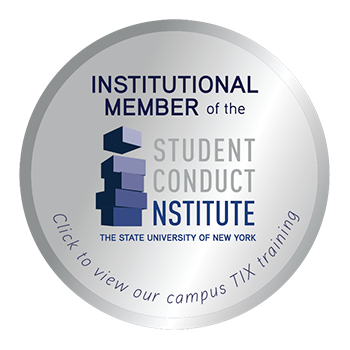Title IX Contacts
Title IX Coordinator:
- Carolyn Boone
Chief Policy & Compliance Officer
Title IX Coordinator
Room 229
607.844.8222 x4283
Deputy Title IX Coordinators:
- Darese Doskal
Associate Vice President of Student Affairs
Room 248
607.844.8222 x6591 - John Geer
Vice President for Human Resources
Affirmative Action Officer
Room 219
607.844.8222 x4440

Although Title IX is best known for breaking down barriers in sports for women and girls, it also prohibits all discrimination and harassment on the basis of sex, including all sexual violence.
Tompkins Cortland Community College’s policy against discrimination and harassment includes Title IX. TC3's Athletics Department adheres to all of the provisions of Title IX.
Sex-based discrimination is any behavior that unfairly treats people differently due to their sex or gender.
Examples include:
- Making academic or employment decisions on the basis of gender
- Having different athletic or student leadership opportunities on the basis of gender
All forms of sex-based harassment and sexual violence are sexual discrimination.
Examples of sex-based harassment include:
- Any uninvited or unwelcome physical contact, touching, petting, pinching, persistent and purposeful brushing up against another individual’s body, etc.
- Sexual assault, including rape
- Any suggestion to an individual that sexual favors or relationships will result in a favorable grade, a promotion, or other beneficial academic or employment opportunity.
- Any suggestion to an individual that refusal to provide sexual favors or relationships will result in a poor grade, demotion, discipline, etc.
- Sexual innuendos, sexually suggestive comments, offensive language, sexually oriented kidding or teasing,
- Any behavior of a sexual nature that by purpose or effect creates an intimidating, hostile or abusive work or academic environment.
- Any harassment based on an individual's sex, even if not sexual in nature.
- Misgendering an individual or refusing to use their identified pronouns or name.
Retaliation
No member of the College community shall retaliate, intimidate, threaten, coerce, or otherwise discriminate against a person who files a complaint, serves as a witness, or offers assistance or participates in a Title IX case in any manner. Participants who experience retaliation should report the incident to a Title IX Coordinator, Campus Police, or the Office of Student Conduct and Community Standards.